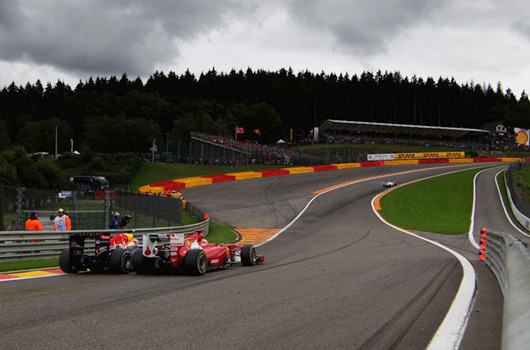BlindCaveSalamander wrote:Alright, let me float this one out there; safety aside, the 70s were better than the 80s.
In terms of experimentation with design, yes and no - we saw some very interesting experimental designs, mainly centred around aerodynamics, from the Lotus 72 kickstarting the shift from the cigar bodied cars of the 1960's to the more modern designs we see today.
We also saw some unusual concepts - some, like the Lotus 56B, were utter disasters (Fittipaldi later said that he thought that it was a miracle that he wasn't killed whilst driving that car), but some, like the Lotus 78 and 79, did change the sport radically. Other, smaller, changes also shaped the sport - the introduction of slick tyres, carbon brake disks, even a few tentative steps towards modern semi-automatic transmissions (the electronically activated clutch of the Lotus 76, and a test hack 312T3 that Ferrari used in 1979 for tyre testing had a push button gear changing system that is not that far removed from what Ferrari used a decade later).
Ironically, in some ways it was also a decade of increasing standardisation in other areas - Cosworth DFV engine, Hewland transmission, Borg & Beck clutch, Girling disks in the early part of the decade and Lockheed disks at the end of it, Lucas electronics and fuel injection systems, Goodyear tyres - all effectively became standardised parts for the bulk of the field by the middle of that era, such that it is not accidental that it became known as the "kit car" era. In effect, it represented the transition period from the semi-professional era of the 1960's to the increasingly professional era of the 1980's, as it was the end of the 1970's that saw a major surge in money into the sport, and with it the expectation of a more professional attitude.
roblomas52 wrote:In oval trim the car looks better than the f1 cars of this season because f1 could learn a lot from the low drag configuration because less aerodynamic drag = higher top speed and better looks and when one considers the fact the indycars produce roughly the same amount of power as f1 cars do (750vs700) from smaller engines, it looks like a win win situation for indycar
Please note this is my first post this year and I've just had a shot glass of champagne and chambord and it was shite
You're comparing two very different situations though - around a typical road circuit, where you are continually accelerating and decelerating your car, the greatest potential area for time gains will be through the corners, where additional downforce will help you considerably (not just through the corner, but also on turn in, since the car will be more stable under braking, and on the exit, where you want to reach maximum possible traction as soon as possible).
There have actually been fairly few occasions this season where the fastest driver in the speed traps has also been the fastest driver overall - more often than not, the Mercedes, Sauber and Toro Rosso teams would be the fastest through the speed traps, but, especially towards the tail end of the season, those teams were certainly not the most competitive.
All in all, there is very little point in going for the maximum straight line speed since the straights of most circuits make up a very limited proportion of the circuit - maybe a few seconds of full throttle at a venue where the lap times tend to be closer to eighty or ninety seconds before a corner comes up and you need to slow down again. If you are going to generally be traction limited around most of the circuit, it is better to bias your set up slightly that way and compromise on straight line speed rather than the other way around.
By comparison, around an oval circuit the driver is rarely going to be traction limited when it comes to applying the power, is only going to be occasionally braking and will be spending most of his time close to or at maximum speed. With the straights making up significantly more of the track, not to mention the fact that you are generally drag rather than traction limited, then there is less of a need for downforce and a greater need for straight line speed - which is essentially the opposite of what would be best around your typical F1 circuit. If you compare the road course package that Indycar uses for road courses compared to oval circuits, that difference in requirements becomes quite apparent.


